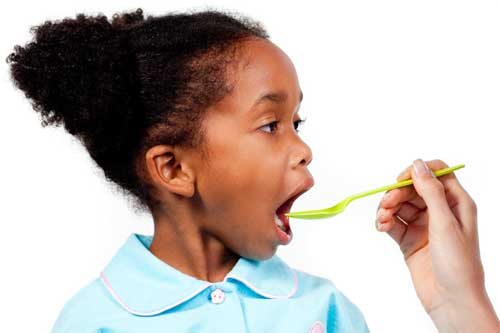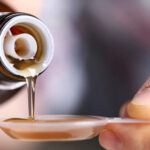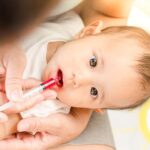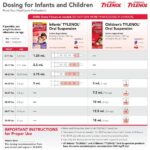How to Administer Liquid Medicines to Children Correctly

Approximately 50,000 emergency department (ED) visits result from unintentional medication overdoses among children under the age of 5. Administering medicines safely to children can be quite complicated. And many parents feel the pressure when a young child needs a medicine, knowing that giving too much or too little could cause serious side effects. Using medicines safely means knowing when they’re needed and when they’re not. Always check with your doctor if you’re not sure.
Before you give your child any medication, check with your child’s doctor. He / she will determine the correct dose for your child. Before you give a medication, make sure that you know:
- Name of the medicine
- Correct dosage (amount of medicine, often written as both the strength and volume)
- Time(s) of day to give medicine
- Number of days to continue the medicine
- Special instructions (example: give with food, give on an empty stomach, refrigerate)
- Side effects to watch out for
- When to call the doctor if you have concerns
Liquid medications should be measured using either a syringe, medication cup or special medication spoon. Occasionally, a medication will be packaged with a graduated dropper for measuring doses.
Teaspoons and tablespoons used at home are not accurate and should not be used to measure medication doses. Medication cups are useful when giving medication to older children.
Procedure
Measuring Liquid Medication
When measuring liquid medication, a milliliter equals a cubic centimeter (ml = cc).
Other frequently used conversions:
- ½ teaspoon = 2.5 mL
- 1 teaspoon = 5 mL
- 1 tablespoon (or 3 teaspoons) = 15 mL
Medication Syringe Instructions
- Fill the syringe with the prescribed dosage of medicine. Remember to measure the dose by lining up the top of the black line of the plunger with the desired dose or number on the syringe. (Your nurse may mark the syringe for the correct dose.)
- Hold the syringe upright and gently tap the air bubbles toward the end.
- Push the plunger gently to force the air out of the end.
- Check that you have the correct amount of medication left in the syringe. Add more medication if needed. Squirt any extra medication back into the bottle if you have too much.
Medication Cup Instructions
- In order to accurately measure a dose of liquid medication, place the cup on a flat surface and keep your eye level with the cup.
- Pour slowly to the desired dose.
Medication Dropper Instructions
- To use the dropper, place the dropper in the bottle and squeeze the rubber top.
- Lift the dropper from the bottle and read the amount off the dropper.
- To get to the correct dosage, gently squeeze the top of the dropper until the medication is in line with the desired dose written on the dropper.
- Do NOT switch droppers from one medication to another. Often the dosing measurements can only be used for a specific medication.
- Do NOT use a dropper with a medication unless the dropper comes in the package with the medication.
Tips
- If you have special concerns about your child taking liquid medication, discuss your concerns with your child’s doctor or pharmacist.
- Do not put your child’s liquid medication into a bottle of formula or cup. If he / she does not drink the entire bottle or cup of liquid, you will not know how much of the medicine he/she has taken. Also, some medications may stick to the sides of the bottle or cup and then the child will not receive the full dose.
- Give all medication as instructed, for as long as instructed. Do not stop medications early unless instructed to do so by your physician.
- Do not skip doses. If you miss a dose of this medication, give it as soon as you remember it. However, if it is almost time for the next dose, skip the missed dose and go back to the regular dosing schedule. Do not give a double dose to catch up.
Suggested Approaches to Ease the Administration of Medications
- For infants less than 4 months of age: Using an oral (needleless) syringe, squirt the medication slowly into the side or the back of the mouth. Have a pacifier or bottle of formula to use between and after medications.
- For infants 4 to 12 months of age: Above method or try a half ounce of diluted fruit juice or teaspoons of baby food given between or after medications.
- For children 12 months to 3 years:
- Fruit juice or cold milk between and after doses
- Popsicles
- Yogurt
- Chocolate pudding
- For children 3 years and older:
- Any of the above options
- Peanut butter – use only in children 4 years and older and use care to avoid choking
- Jelly
- Honey (never give honey to a child less than 1 year of age)
- Ice cream
- Pixy Stix – use only in children 6 years and older
- Ice chips – use only in children 6 years and older
- Life Savers or other hard candy – use only in children 6 years and older
The PRevention of Overdoses and Treatment Errors in Children Taskforce (PROTECT) Initiative is an innovative collaboration bringing together public health agencies, private sector companies, professional organizations, consumer/patient advocates, and academic experts to develop strategies to keep children safe from unintentional medication overdoses. Medication overdoses are a significant public health problem and often lead to emergency treatment and sometimes hospitalization. Learn More on PROTECT Safety Improvements





